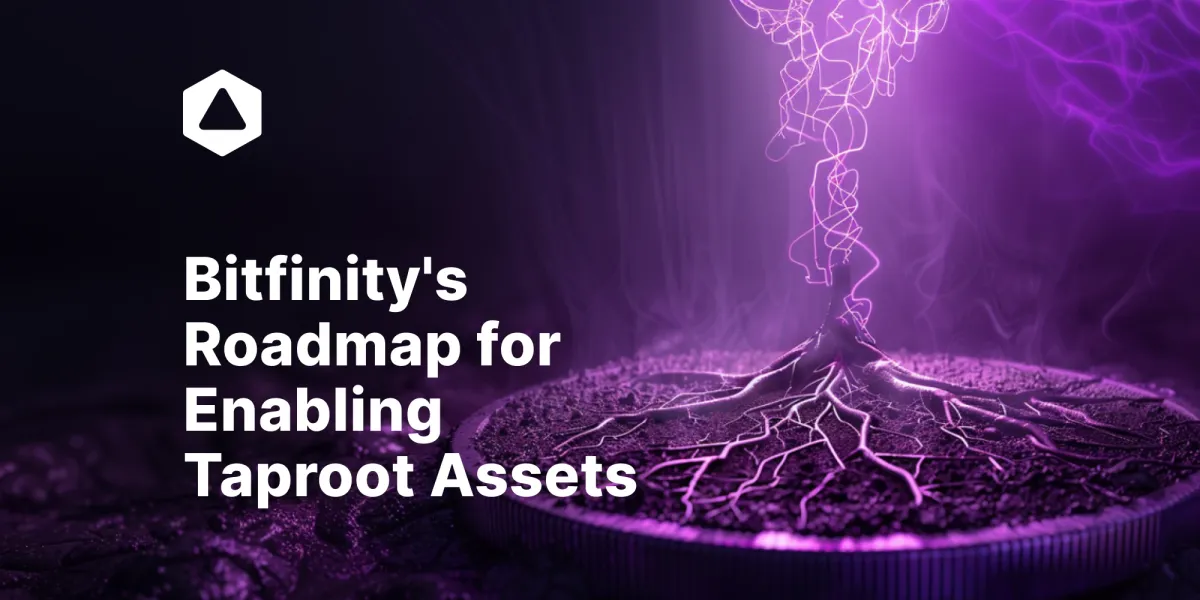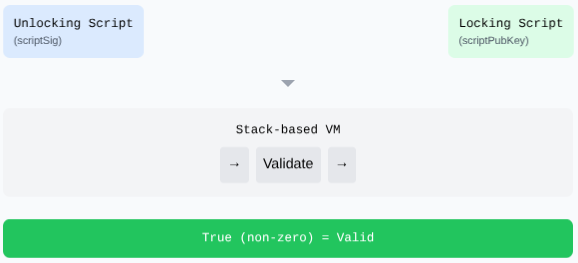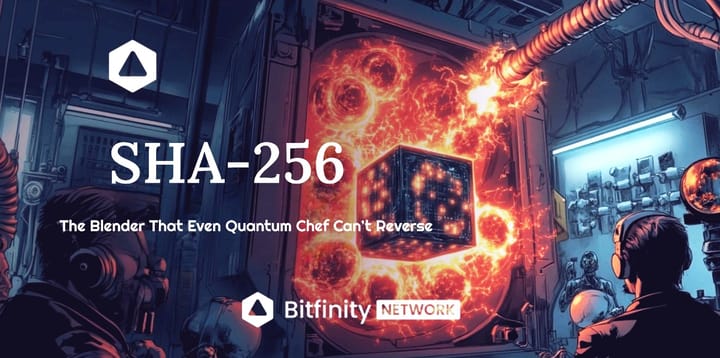How Does Bitcoin Script Work? Understanding the Mechanics of Bitcoin Scripting
Unravel the mysteries of Bitcoin scripting and learn how this language powers programmable money. Explore its inner workings, potential, and future enhancements.

Bitcoin, the revolution we love and have seen unfold, is more than just a peer-to-peer electronic cash system. It has been the playing ground for every experimentation we also have seen on Ethereum. While it's crucial to understand exactly what it is that's holding it back, we need to understand and dive deeper into the core of Bitcoin transactions: the Bitcoin Script.
In this blog, we'll explore what Bitcoin scripting is, how it works, and its potential to transform the way we think about programmable money.
Bitcoin's Scripting Language
First and foremost, Bitcoin's scripting language is called Script. It is a simple, stack-based, and Forth-like programming language used to define the conditions under which Bitcoin transactions can be validated and spent.
It is unique primarily because it is intentionally designed to be simple, secure, and non-Turing complete, in contrast to that of Ethereum which is fully Turing complete. This means Bitcoin Script is limited in functionality to prevent infinite loops and ‘complex’ computations, which is good for keeping it simple and predictable.
The maximum size of the stack in Bitcoin Script is 520 bytes, which helps prevent excessive resource consumption and potential denial-of-service attacks. There are also differences in how the stack is handled between legacy Bitcoin Script and the newer Taproot script.
In legacy script, it's possible to have multiple items remaining on the stack after script execution. However, in Taproot script, there can only be a single item (true or false) remaining on the stack at the end of script execution, as we see how it actually works.

How does Bitcoin's Scripting Language work?
When we look at how the Bitcoin scripting language exactly works, we understand that by executing two scripts in sequence, you have an unlocking script (scriptSig) followed by a locking script (scriptPubKey), in a way to validate whether a transaction input is authorized to spend the referenced output.
Each Bitcoin transaction output contains a script that locks the funds with certain conditions. To unlock and spend these funds, the spending transaction must provide a script that satisfies these conditions.
Bitcoin Script Flow
- Locking and Unlocking Scripts: Each UTXO has a locking script (scriptPubKey) that defines the conditions required to spend the funds. To spend the UTXO, an unlocking script (scriptSig) must be provided that satisfies the conditions set by the locking script.
- Execution on the Stack: When a transaction is being validated, the unlocking script and locking script are combined and executed on a stack-based virtual machine. The scripts are evaluated from left to right, with data elements being pushed onto the stack and op codes performing operations on the stack.
- Successful Execution: If the script execution completes without errors and the top item on the stack is a non-zero value (true), the transaction is considered valid, and the UTXO can be spent.

Advanced Transaction Types
On top of that, Bitcoin Script also supports several advanced transaction types that offer extra functionality and privacy. We recognize the following three:
Pay-to-Script-Hash (P2SH), which is a type of transaction that allows spending conditions to be hidden until redemption. The script hash is used as the address, and the actual script is revealed when the funds are spent, for privacy use.
Multi-signature (MultiSig) Scripts, which are scripts that require multiple signatures from different private keys to authorize spending. This feature is done for security and enables shared control over funds, making it useful for escrow, deals or corporate treasury management.
Time-locked Scripts, which are scripts that restrict spending until a certain time or block height is reached. This functionality could be useful for vesting contracts, escrow, and other time-dependent transactions.
How Can You Experiment with Bitcoin Script?
If you want to experiment with Btitcoin script, you can get hands-on experience with Bitcoin Script, you can use an online IDE like bitscript. This tool provides a sandbox environment where you can write, execute, and analyze Bitcoin Scripts.
Let's walk through a simple example of adding two numbers using Bitcoin Script:
- Open bitscript.app in your browser and click on "Develop" to access the script sandbox.
- In the script editor, type the number 1 and press enter. You'll notice that the IDE prepends OP_PUSH1 to the number, indicating that we're pushing one byte of data (the number 1) to the stack.
- Next, type the number 2 and press enter. Again, OP_PUSH1 is prepended, as the number 2 is also represented by one byte.
- To add these two numbers, we need to use the OP_ADD op code. Type OP_ADD and press enter.
- Click the "Step" button to execute the script step by step. You'll see the stack visualizer on the right update as each item is pushed and the addition operation is performed.
- After execution, the stack should contain a single item with the value 3, representing the result of adding 1 and 2.
This is just a simple example, but it demonstrates the basic flow of pushing data to the stack and using op codes to perform operations on that data.
Also for those interested you can play the following game, that is perfect for beginners to get an introduction to Bitcoin scripting language.

Upcoming enhancements to Bitcoin Script
Although not as advanced as platforms like Ethereum, Bitcoin Script enables basic smart contract functionality. This includes advanced transaction types as described above and even atomic swaps, which allow for an exchange of assets across different blockchains without the need for intermediaries.

But by combining various opcodes and data pushes, developers can create custom transaction rules that enable innovative use cases while preserving the simplicity and security of the Bitcoin protocol.
One of them is the reintroduction of OP_CAT (BIP-347), fully described on our blog, we know that OP_CAT is an opcode that concatenates two stack items. It was originally part of Bitcoin Script but removed in 2010 due to a critical overflow vulnerability.

It has been proposed for reintroduction via BIP-347, aiming to enable more advanced scripting capabilities like layer-2 solutions, and zero-knowledge rollups (ZK-rollups).
There is also an expansion of smart contract capabilities. Bitcoin Script is not Turing complete by design, however recent innovations have introduced opcodes that enable transaction chains to achieve Turing completeness at a multi-transaction level.
We see that we can bridge the EVM over to the Bitcoin foundation. After carefully assessing each change for potential security risks and resource usage, the modular approach has been made.

Conclusion
Bitcoin scripting offers several advantages, including enhanced security, flexibility for sophisticated transactions, and the potential for innovation within the Bitcoin blockchain. However, it also has some limitations, such as challenges in debugging and larger transaction sizes.
Despite these limitations, Bitcoin scripting has the power to transform Bitcoin from a mere store of value to a truly programmable system. This is because developers are and have experimented successfully with it and continue to explore and expand the possibilities of Bitcoin scripting, even learning from other blockchains and creating synergy between them
The Bitcoin community is actively exploring ways to enhance the scripting language while maintaining the network's security and stability. Potential improvements include the integration of layer-2 scaling solutions to improve Bitcoin's scalability and privacy.
Future developments in Bitcoin scripting may also draw inspiration from innovations in altcoins and forks, such as more expressive opcodes and transaction introspection. However, any changes to the scripting language will be carefully considered and conservatively adopted to ensure that the network's security and consensus mechanisms remain intact.

Connect with Bitfinity Network
Bitfinity Wallet | Bitfinity Network | Twitter | Telegram | Discord | Github

*Important Disclaimer: The information provided on this website is for general informational purposes only and should not be considered financial or investment advice. While we strive for accuracy, Bitfinity makes no representations or warranties regarding the completeness, accuracy, or reliability of the content and is not responsible for any errors or omissions, or for any outcomes resulting from the use of this information. The content may include opinions and forward-looking statements that involve risks and uncertainties, and any reliance on this information is at your own risk.
External links are provided for convenience, and we recommend verifying information before taking any action. Bitfinity is not liable for any direct or indirect losses or damages arising from the use of this information.











Comments ()